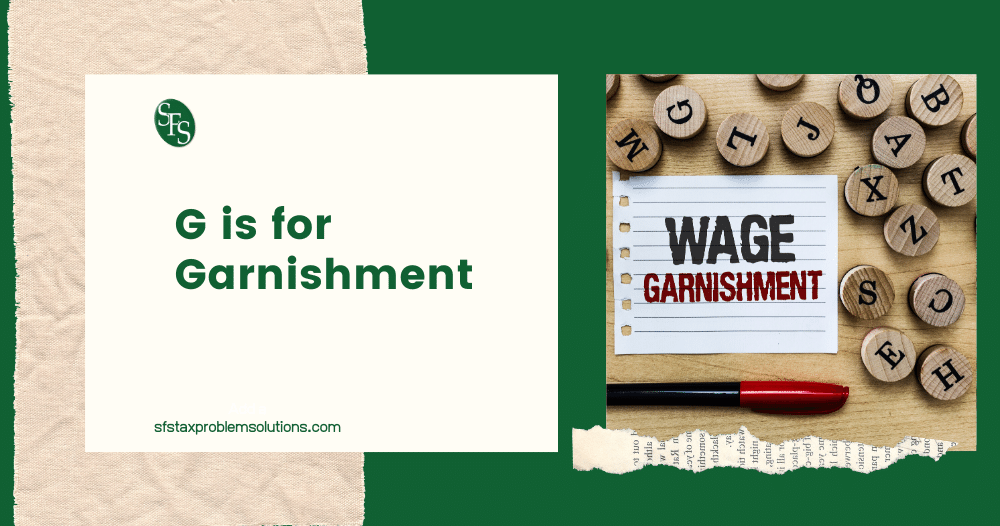G is for Garnishment
G is for garnishment. Wage garnishment is one of the most common types of garnishment. The IRS can garnish or legally seize any income you make to satisfy federal tax debt or taxes owed.
Garnishments can apply to your hourly wages, salary, commissions, and bonuses.
When the IRS seeks to garnish your wages for a tax debt that you owe, it will first send you a written notice that sets out the amounts that you owe. The notice will include the tax, penalties, and interest. This notice should also provide you with a due date by which you must pay the balances in full. Assuming that you do not pay the balance in full, you later will receive another notice, entitled “Final Notice of Intent to Levy.” Once thirty days have passed from the time you have received the final notice, and you still have failed to pay the balance due, the IRS can proceed with garnishing your income.
The law places limits on the amount that a creditor can garnish from your wages. These normal limits do not apply to the IRS. The tax code requires the IRS to leave you with a certain amount of income after garnishing your wages to pay your tax debt. The tax code contains a table that corresponds to the number of exemptions that you claim for tax purposes. It tells the amount necessary for you and your family to pay for basic living necessities. Unfortunately, a garnishment by the IRS can amount to 70% or more of your income.
There are several different ways in which you can resolve your problem with the IRS. To stop a wage garnishment, you must get back into good standing with the IRS, either by paying your balance in full or entering into a tax payment plan or some other type of resolution.



